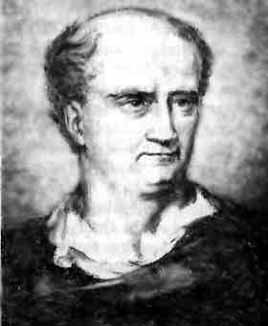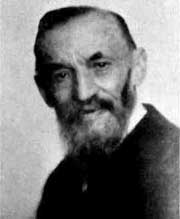- About MAA
- Membership
- MAA Publications
- Periodicals
- Blogs
- MAA Book Series
- MAA Press (an imprint of the AMS)
- MAA Notes
- MAA Reviews
- Mathematical Communication
- Information for Libraries
- Author Resources
- Advertise with MAA
- Meetings
- Competitions
- Programs
- Communities
- MAA Sections
- SIGMAA
- MAA Connect
- Students
- MAA Awards
- Awards Booklets
- Writing Awards
- Teaching Awards
- Service Awards
- Research Awards
- Lecture Awards
- Putnam Competition Individual and Team Winners
- D. E. Shaw Group AMC 8 Awards & Certificates
- Maryam Mirzakhani AMC 10 A Awards & Certificates
- Two Sigma AMC 10 B Awards & Certificates
- Jane Street AMC 12 A Awards & Certificates
- Akamai AMC 12 B Awards & Certificates
- High School Teachers
- News
You are here
Wronskians and Linear Independence: A Theorem Misunderstood by Many – A Mini-Primary Source Project for Students of Differential Equations, Linear Algebra and Others
When an instructor or text presents a new mathematical idea to students, it almost always is presented in a “final form” where every statement is correct, the notation is optimized relative to current notational standards, and results logically build on previous work. Since this is all students have ever seen, they believe that is how they should be producing mathematics themselves. And when they don’t—when they make mistakes or struggle—they are understandably discouraged, since they have no reason to realize that mathematicians in fact normally struggle to arrive at their results. The pedagogical value of the mini-Primary Source Project Wronskians and Linear Independence: A Theorem Misunderstood by Many is the way it which it explicitly reveals to students the different ways in which several well-known mathematicians struggled over several decades.
The Wronskian of the functions \(f_1(x), f_2(x), \dots, f_n(x)\) is the matrix \(W\) with first row consisting of the original functions, second row consisting of their derivatives, and continuing until the \((n-1)\)st derivatives so that the matrix is square. This matrix was named for Josef-Maria Hoëné-Wronski (1776–1853), a Polish mathematician who developed certain "combinatorial sums" which ended up being the determinants of Wronskians in his Réfutation de la théorie des fonctions analytiques de Lagrange [Wronski 1812]. The following is now well known and taught in every ordinary differential equations course.
Theorem
If \(\det{(W( f_1(x), f_2(x), \dots, f_n(x)))} \neq 0\) for some \(x_0 \in I\), then \(f_1(x), f_2(x), \dots, f_n(x)\) are linearly independent on the interval \(I\).
Our students will almost universally assume the converse is true, both because many assume the converse of a true statement is always true, but also because the converse of this particular theorem absolutely seems like it should be true. Indeed, excellent mathematicians such as Charles Hermite (1822–1901), Hermann Laurent (1841–1908) and Camille Jordan (1838–1922) published (incorrect) proofs of the converse. Perhaps the above foreshadowing makes it obvious that this theorem is actually not true.


Josef-Maria Hoëné-Wronski (left) and Guiseppe Peano (right).
Convergence Portrait Gallery.
In 1889, Guiseppe Peano (1858–1932) gave counterexamples to the converse, including the one that most often appears in today’s texts [Peano 1889a, 1889b]. He also asked what conditions can be appended to the hypotheses of the converse to make it true. Various such conditions were then provided over the next 20 years, such as requiring the functions to be analytic, which often is presented in textbooks after the above Function Independence Theorem. The mini-Primary Source Project (mini-PSP) Wronskians and Linear Independence: A Theorem Misunderstood by Many tells the story of this theorem, complete with the struggles, false starts, counterexamples, and proposed corrections that went into its making. It is a concrete example of how mathematics typically progresses, and it will hopefully inspire students to be more forgiving, expecting, and accepting of their own struggles
The complete project Wronskians and Linear Independence: A Theorem Misunderstood by Many (pdf) is ready for student use, and the LaTeX source code is available from the author by request. It is designed for use in a differential equations course, a linear algebra course, or a bridge proofs course. Suggestions for each approach are included in the set of instructor notes appended to the end of the student project; these notes additionally explain the purpose of the project and guide the instructor through its goals. The interested reader is referred to the Convergence article Peano on Wronskians: A Translation (by Susannah M. Engdahl and Adam E. Parker) for more details of the story of this theorem.
This project is the eighteenth in A Series of Mini-projects from TRIUMPHS: TRansforming Instruction in Undergraduate Mathematics via Primary Historical Sources appearing in Convergence, for use in courses ranging from first-year calculus to analysis, number theory to topology, and more. Links to other mini-PSPs in the series appear below. The full TRIUMPHS collection includes an additional three PSPs for use in a differential equations course and two for use in a linear algebra course. A number of the PSPs in the collection are also suitable for use in an Introduction to Proofs course.
Acknowledgments
The development of the student project Wronskians and Linear Independence: A Theorem Misunderstood by Many has been partially supported by the TRansforming Instruction in Undergraduate Mathematics via Primary Historical Sources (TRIUMPHS) project with funding from the National Science Foundation’s Improving Undergraduate STEM Education Program under Grants No. 1523494, 1523561, 1523747, 1523753, 1523898, 1524065, and 1524098. Any opinions, findings, and conclusions or recommendations expressed in this project are those of the author and do not necessarily reflect the views of the National Science Foundation.
The author would like to thank Janet HBarnett, Danny Otero, and Dominic Klyve for inviting me to contribute to TRIUMPHS. They—along with Dave Ruch, Kenneth Monks, and David Pengelley—provided essential help in improving this mini-PSP. Additionally, Hanson Smith and his student Julia Guskind correctly pointed out that I had severely underestimated the subtlety of Task 11.
References
Engdahl, S. M., and A. E. Parker. 2011, April. Peano on Wronskians: A Translation. Convergence 8. DOI:10.4169/loci003642.
Peano, G. 1889a. Sur le déterminant Wronskien (On the Wronskian determinant). Mathesis 9:75–76.
Peano, G. 1889b. Sur les Wronskiens (On Wronskians). Mathesis 9:110–112.
Hoene-Wroński, J. M. 1812. Réfutation de la théorie des fonctions analytiques de Lagrange (Refutation of Lagrange’s theory of analytic functions). Paris: Blankenstein.
Adam E. Parker (Wittenberg University) , " Wronskians and Linear Independence: A Theorem Misunderstood by Many – A Mini-Primary Source Project for Students of Differential Equations, Linear Algebra and Others," Convergence (January 2021)




